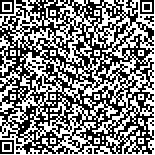| 摘要: |
| 虾夷扇贝(Patinopecten (Mizuhopecten) yessoensis)于1982 年从日本引进, 在中国已经成为一个很重要的产业。本研究利用微卫星标记, 对獐子岛海域2 个养殖群体虾夷扇贝(大耗岛、褡裢岛), 1 个日本野生群体遗传多样性进行了评估, 并对2 个养殖群体的群体内繁育和群体间杂交后代进行了遗传和生长检测。结果表明: 养殖群体与日本野生群体相比, 其遗传多样性没有显著降低, 养殖群体遗传多样性较高, 养殖状况暂时良好。TL 群体和DH 群体遗传距离很近, DH、TL 群体和RB 群体的遗传距离远大于TL 群体和DH 群体间的遗传距离。说明2 个养殖虾夷扇贝群体遗传分化较小。分别对4 个子代群体的壳长、壳高在幼苗培育第1、5、10、15、20、100、190 天进行测量, 结果表明生长性状差异不显著。4 个子代群体的遗传多样性差异也不显著, 说明养殖群体的遗传背景不清楚, 种质资源混交较严重。本研究结果反映了我国虾夷扇贝种质资源评估状况, 并为虾夷扇贝的健康养殖提供基础数据。 |
| 关键词: 虾夷扇贝(Patinopecten (Mizuhopecten) yessoensis) 微卫星 遗传多样性 杂交 生长检测 |
| DOI: |
| 分类号: |
| 基金项目:中国科学院海洋研究所獐子岛渔业海洋生态养殖联合实验室开放研究基金; 中国科学院重要方向项目群(KZCX2-EW-Q21) |
|
| Genetic diversity in two-generation of cultured Japanese scallop (Patinopecten (Mizuhopecten) yessoensis) populations |
|
|
| Abstract: |
| The Japanese scallop (Patinopecten (Mizuhopecten) yessoensis) was introduced into China in 1982. Since then, the culture of Japanese scallop has become an important industry in China. In this study microsatellite was used to investigate the genetic variations of two cultured populations [one from Dahao island (DH) and another from Talian island (TL)] and one wild Japanese scallop population (RB). The four F1 progeny populations were the one hatchery population which from Dahao island (WDH), one population from Talian island (WTL), one outcrossed population (WTD population) from Dahao island (♀) and Talian island (♂), one outcrossed population (WDT population) from Dahao island (♂) and Talian island (♀). Forty-eight individuals from each population were analyzed. Amplification was performed in a PCR reaction and its products were separated by 12% non-denaturing polyacrylamide gel. The difference in genetic diversity among two cultural populations (DH and TL population) and one natural population (RB population) was not significant. The two cultural populations were in good condition temporarily. According to their genetic similarity (I) and genetic distance (D), we found that the genetic distance between DH and TL was the least. The phenotype characters (shell length and shell height) of four F1 progeny populations scallop were measured at 1, 5, 10, 15, 20, 100, 190 days old. Non-significant differences were found between different characters in four F1 progeny populations at different growth stages. The difference in genetic diversity among the four F1 progeny populations was not significant, either. The results showed the genetic background of cultured populations was not clear and cultured populations were mixed with each other seriously. The results of this study reflect resources evaluation situation for Japanese scallop in our country and provide the basis of data for health breeding of Japanese scallop. |
| Key words: Patinopecten (Mizuhopecten) yessoensis microsatellites genetic diversity hybridization growth detection |
